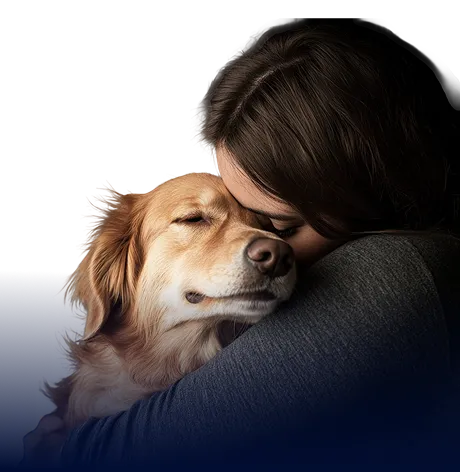For the Purrbabies


Learn how to help your dog overcome their reactivity.

Leash reactivity doesn’t mean a dog is “bad.” It’s an over-response to a trigger, and the best way to help your dog overcome it is to begin to understand why it happens in the first place.
Leash reactivity is simply a dog exhibiting an over-reaction (lunging, barking, growling, etc.) while on a leash. It can have varying causes and triggers.
Contrary to popular belief, genetics is not the primary factor in determining if a dog will have reactivity or not. It can be a contributor—such as that of the MAOA gene—but reactivity is a very complex trait. Environmental factors often heavily influence reactivity.
The restraint of a leash can cause a dog to become frustrated. This is especially true if the dog wants to interact with a dog, person, or object just out of their reach. In some cases, it can lead to resentment of sorts toward the leash and alter their behavior while attached to one.
If a dog is scared, they may lash out. It can be fear and trauma from a past experience or a reaction to a new experience. Regardless, it can cause a negative association.
Animals that are in pain or uncomfortable can lash out. After all, they don’t have words to tell you how they feel so they’ll show you through their actions. If your pet’s behavior suddenly changes, consider taking them to the vet. It could be a sign of an underlying illness.
Dogs socializing with other dogs and objects is vital for their growth and development. However, for dogs that didn’t have socialization or who experienced poor socialization, this can cause them to develop a fear response to different stimuli.
If a person were to use punishment or negative reinforcement to get their dog to behave better on the leash, it can cause them to build mistrust. Since that activity happens while they’re wearing a leash, they may develop a poor relationship with that activity and lash out in response.
Leaving leash-reactivity alone can cause the behavior to escalate into aggression. Fortunately, there are ways to help our dogs overcome reactivity that doesn’t have to be overwhelming or scary to approach.
When working on leash-reactivity, the goal is to help your dog be calm and approach their triggers in a neutral, unbothered way. While you can absolutely work at home to help your dog overcome their reactivity, you can always consult with a professional. Some dogs may need medications to help them calm down enough to succeed at these training techniques.
"Unless there is a medical condition that is contributing to a dog's behaviors, leash reactivity is usually managed the same way regardless of the underlying cause. It is important, however, to identify your dog's triggers so that you can work on training techniques such as counterconditioning.
“Some dogs may benefit from prescription medication to help manage their anxiety and help them succeed, however, this is not a stand-alone solution. Consulting a positive reinforcement trainer or veterinary behaviorist, or enrolling in a class such as Reactive Rover, are also great options." - Dr. Liza Cahn
Whether or not you use a trainer to help with leash reactivity, there are a few helpful tips you can follow to help your dog limit their negative behavior.
They’re exhibiting signs of leash reactivity, which is often a mix of fear or frustration caused by a trigger.
It could be due to several reasons like fear, anxiety, lack of socialization, pain, or territorial behavior. You should consult your vet about this aggressive behavior to avoid escalation.
There are a few tips such as keeping interactions short, understanding your dog’s personal space, avoiding triggers, and using treats as rewards. Consult with a trainer for a more detailed, focused plan on how to help them overcome their reactivity.
This is when a dog on a leash may show threatening behavior to a human. It’s often caused by feelings that stem from anxiety, fear, or frustration and can manifest in barking or lunging.
Yes! Plus, most localities have leash laws that require it.








